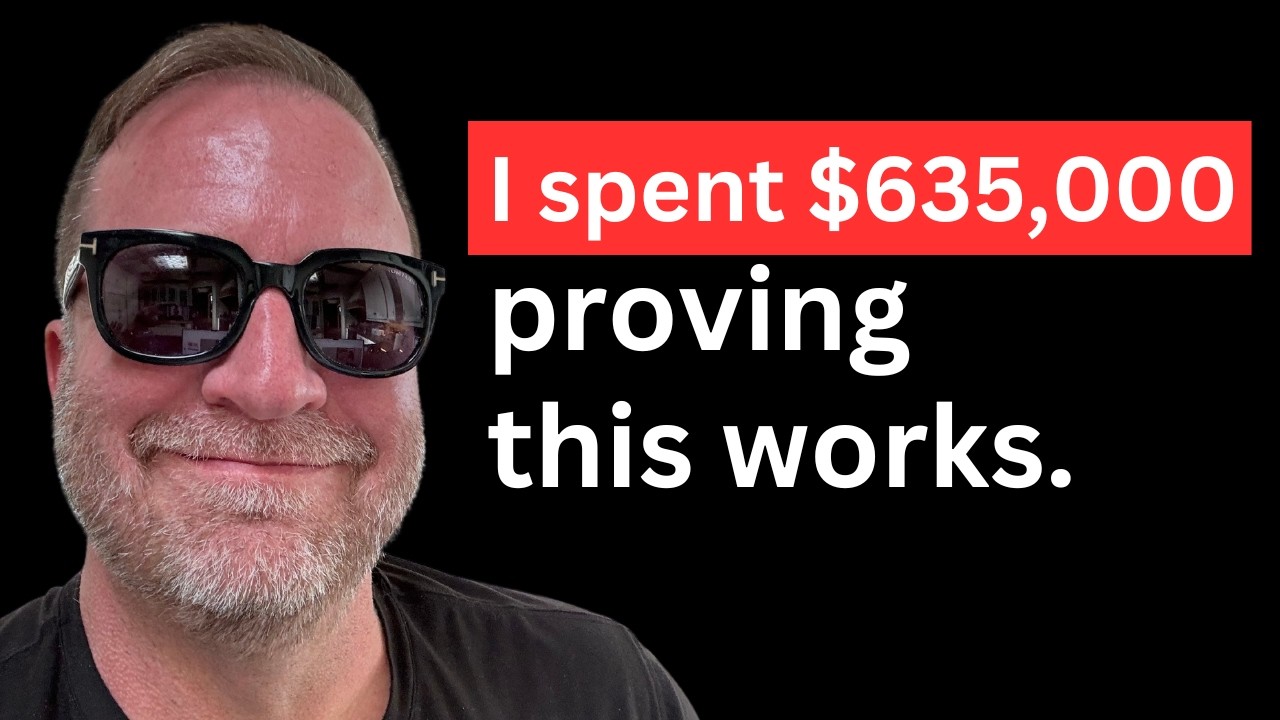3 TOP Amazon PPC Ad Strategies - Amazon Advertising Hacks
Summary
TLDRThis video unveils the top three Amazon advertising strategies currently in use, designed to boost business impact immediately. After refining over 140 brands, the presenter shares tactics for reducing wasted ad spend by identifying underperforming keywords, scaling profitable search terms, and optimizing campaign structure. A unique approach using Amazon's newly released 'Search Query Performance Report' is highlighted for gaining insights on keyword conversion rates and optimizing ad positions for increased sales without revealing the secret strategy kept for the video's climax.
Takeaways
- 🔍 The speaker reveals three Amazon advertising strategies that can be implemented immediately for business impact.
- 📉 The first strategy focuses on reducing ad spend waste by eliminating underperforming keywords, specifically in Auto broad phrase and expanded match types.
- 💰 A keyword is considered for removal if it spends more than 50% of the product's sale price with no sales, indicating a high ACoS (Ad Cost of Sale).
- 🚫 It's advised not to add negative keywords for exact and product targeting matches, as these can be managed by adjusting bids instead.
- 📈 The second strategy is about scaling successful elements by launching campaigns based on profitable search terms identified from the search term report.
- 🛠️ The speaker provides a tool to help automate the process of identifying profitable search terms and managing campaigns, reducing manual workload.
- 📝 Campaign structure is important; the recommended approach is one campaign with one ad group containing no more than five keywords to maintain performance.
- 💡 A minimum campaign budget of $100 is suggested, with the idea that increasing the budget on high-performing campaigns can lead to increased sales and profitability.
- 📊 The third strategy involves using a new Amazon feature, the search query performance report, which provides insights into keyword performance at a granular level.
- 🔑 The report shows the conversion rate for each keyword, which is crucial for understanding customer behavior and optimizing ad spend.
- 🛑 The speaker emphasizes the importance of not pausing successful keywords and instead focusing on optimizing or removing underperforming ones.
- 🔄 The process involves continuous testing and iteration, adjusting bids and budgets to find the optimal settings for each campaign.
Q & A
What are the three best Amazon advertising strategies mentioned in the video?
-The three best Amazon advertising strategies mentioned are: 1) Reducing wasted ad spend by identifying and negating underperforming keywords. 2) Scaling profitable search terms by launching campaigns based on them. 3) Utilizing the search query performance report to optimize campaigns.
How does the presenter suggest reducing ad spend on underperforming keywords?
-The presenter suggests reducing ad spend by downloading the search term report, filtering for keywords with high spend and no sales or high ACoS, and adding them as negatives in campaigns.
What is the recommended approach for filtering keywords with high ACoS?
-The recommended approach is to filter for keywords with an ACoS greater than a certain value, such as 85%, but only if they have a low number of orders and not generating significant sales.
How can one add negative keywords to Amazon campaigns efficiently?
-One can add negative keywords by manually entering them in the campaign manager or by using a macro tool provided by the presenter, which automates the process by uploading a sheet to Amazon in bulk.
Why should one launch campaigns based on profitable search terms?
-Launching campaigns based on profitable search terms helps to scale what is already working well, by focusing on keywords that have a low ACoS and are driving sales.
What is the recommended campaign structure for Amazon PPC according to the video?
-The recommended structure is one campaign with one ad group containing no more than five keywords to ensure even budget distribution and optimal performance.
Why is a minimum campaign budget of $100 suggested?
-A minimum campaign budget of $100 is suggested to allow for sufficient spend and sales data to analyze performance and make informed adjustments for optimization.
What is the search query performance report and how is it used in the strategy?
-The search query performance report is a tool in Amazon's Brand Analytics that shows keyword performance, including impressions, clicks, and conversions. It's used to identify keywords with high purchase share and low impression share to optimize campaigns.
How can one overlay the search query performance report with other data like Cerebro and the search term report?
-The presenter suggests using a custom macro tool that combines the search query performance report, Cerebro, and the search term report in one place for easier analysis and campaign optimization.
What is the significance of the 'click through rate' in the context of the search query performance report?
-A high click through rate indicates that people are interested in clicking on the listing from a specific keyword, suggesting relevance and potential for increased sales with better visibility.
Outlines

This section is available to paid users only. Please upgrade to access this part.
Upgrade NowMindmap

This section is available to paid users only. Please upgrade to access this part.
Upgrade NowKeywords

This section is available to paid users only. Please upgrade to access this part.
Upgrade NowHighlights

This section is available to paid users only. Please upgrade to access this part.
Upgrade NowTranscripts

This section is available to paid users only. Please upgrade to access this part.
Upgrade NowBrowse More Related Video

Every Marketing Trick Explained in 10 Minutes

How to Sell Books Online on Amazon, Flipkart and Meesho | Make Money Online | Selling books online

This Will Transform Your Marketing Strategy | Step By Step Guide Based On $635,000 Advertising Test

Use the fact nobody knows who you are to your advantage

How to Start Amazon Dropshipping from Oman to USA | Step-by-Step Guide 2025

Amazon Seller Central Overview
5.0 / 5 (0 votes)